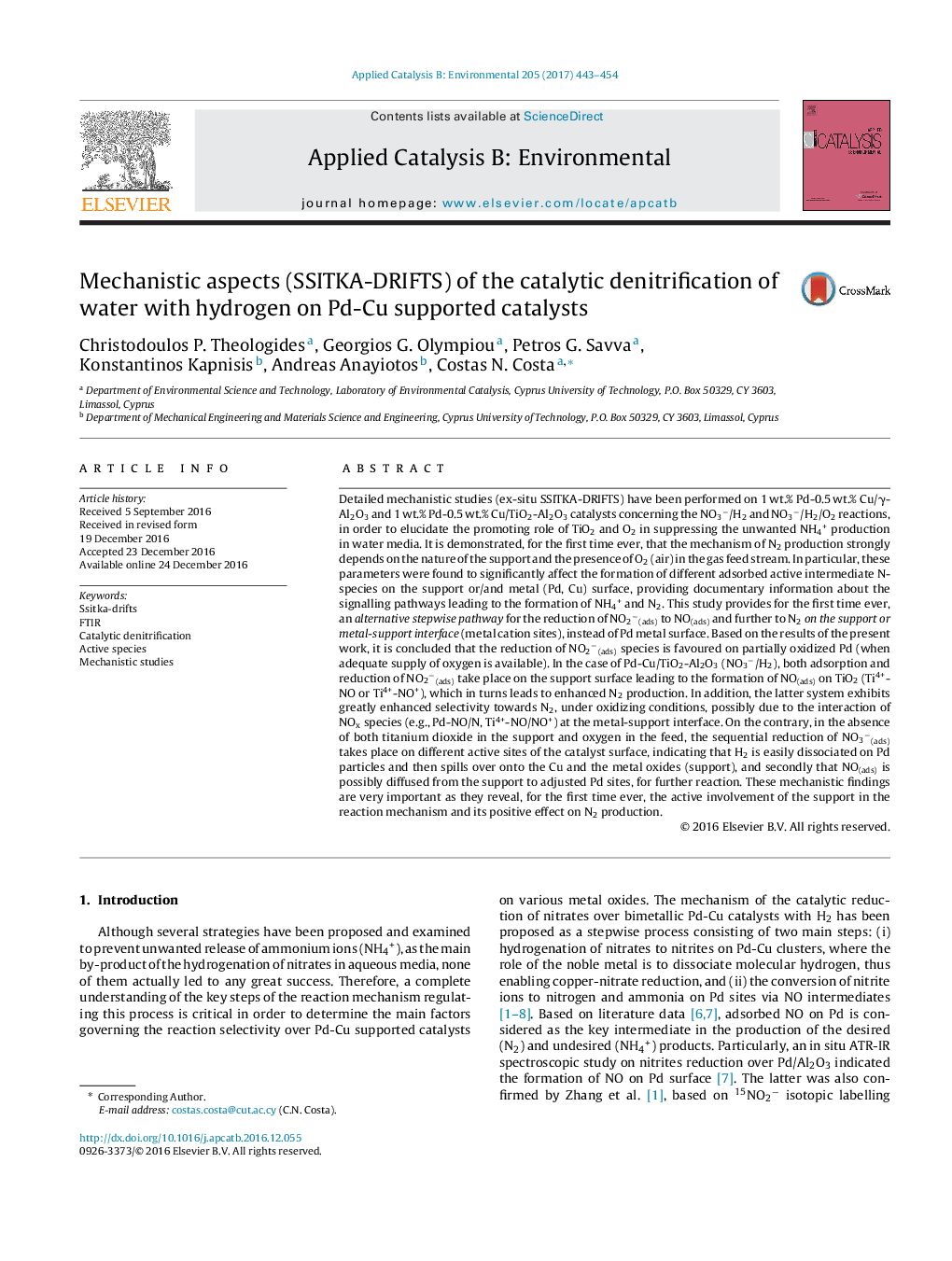| کد مقاله | کد نشریه | سال انتشار | مقاله انگلیسی | نسخه تمام متن |
|---|---|---|---|---|
| 6454364 | 1418815 | 2017 | 12 صفحه PDF | دانلود رایگان |

- The mechanisms of the involvement of support in the NO3/H2/O2 reaction is revealed.
- Formation of active N-species depends on composition of support and reaction conditions.
- Under certain conditions the support is involved in the reaction's mechanism.
- Formation of N2 requires the interaction of at least 2 different intermediate species.
- N2 formation requires a specific MNO bond strength and moderate H-surface coverage.
Detailed mechanistic studies (ex-situ SSITKA-DRIFTS) have been performed on 1 wt.% Pd-0.5 wt.% Cu/γ-Al2O3 and 1 wt.% Pd-0.5 wt.% Cu/TiO2-Al2O3 catalysts concerning the NO3â/H2 and NO3â/H2/O2 reactions, in order to elucidate the promoting role of TiO2 and O2 in suppressing the unwanted NH4+ production in water media. It is demonstrated, for the first time ever, that the mechanism of N2 production strongly depends on the nature of the support and the presence of O2 (air) in the gas feed stream. In particular, these parameters were found to significantly affect the formation of different adsorbed active intermediate N-species on the support or/and metal (Pd, Cu) surface, providing documentary information about the signalling pathways leading to the formation of NH4+ and N2. This study provides for the first time ever, an alternative stepwise pathway for the reduction of NO2â(ads) to NO(ads) and further to N2on the support or metal-support interface (metal cation sites), instead of Pd metal surface. Based on the results of the present work, it is concluded that the reduction of NO2â(ads) species is favoured on partially oxidized Pd (when adequate supply of oxygen is available). In the case of Pd-Cu/TiO2-Al2O3 (NO3â/H2), both adsorption and reduction of NO2â(ads) take place on the support surface leading to the formation of NO(ads) on TiO2 (Ti4+-NO or Ti4+-NO+), which in turns leads to enhanced N2 production. In addition, the latter system exhibits greatly enhanced selectivity towards N2, under oxidizing conditions, possibly due to the interaction of NOx species (e.g., Pd-NO/N, Ti4+-NO/NO+) at the metal-support interface. On the contrary, in the absence of both titanium dioxide in the support and oxygen in the feed, the sequential reduction of NO3â(ads) takes place on different active sites of the catalyst surface, indicating that H2 is easily dissociated on Pd particles and then spills over onto the Cu and the metal oxides (support), and secondly that NO(ads) is possibly diffused from the support to adjusted Pd sites, for further reaction. These mechanistic findings are very important as they reveal, for the first time ever, the active involvement of the support in the reaction mechanism and its positive effect on N2 production.
102
Journal: Applied Catalysis B: Environmental - Volume 205, 15 May 2017, Pages 443-454